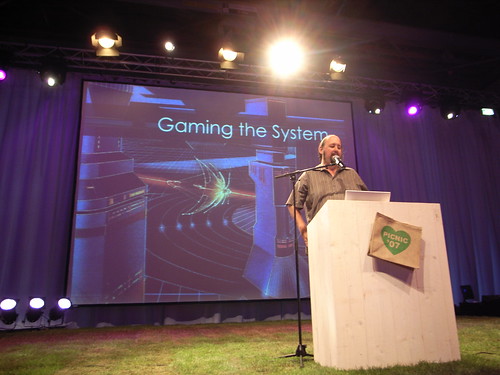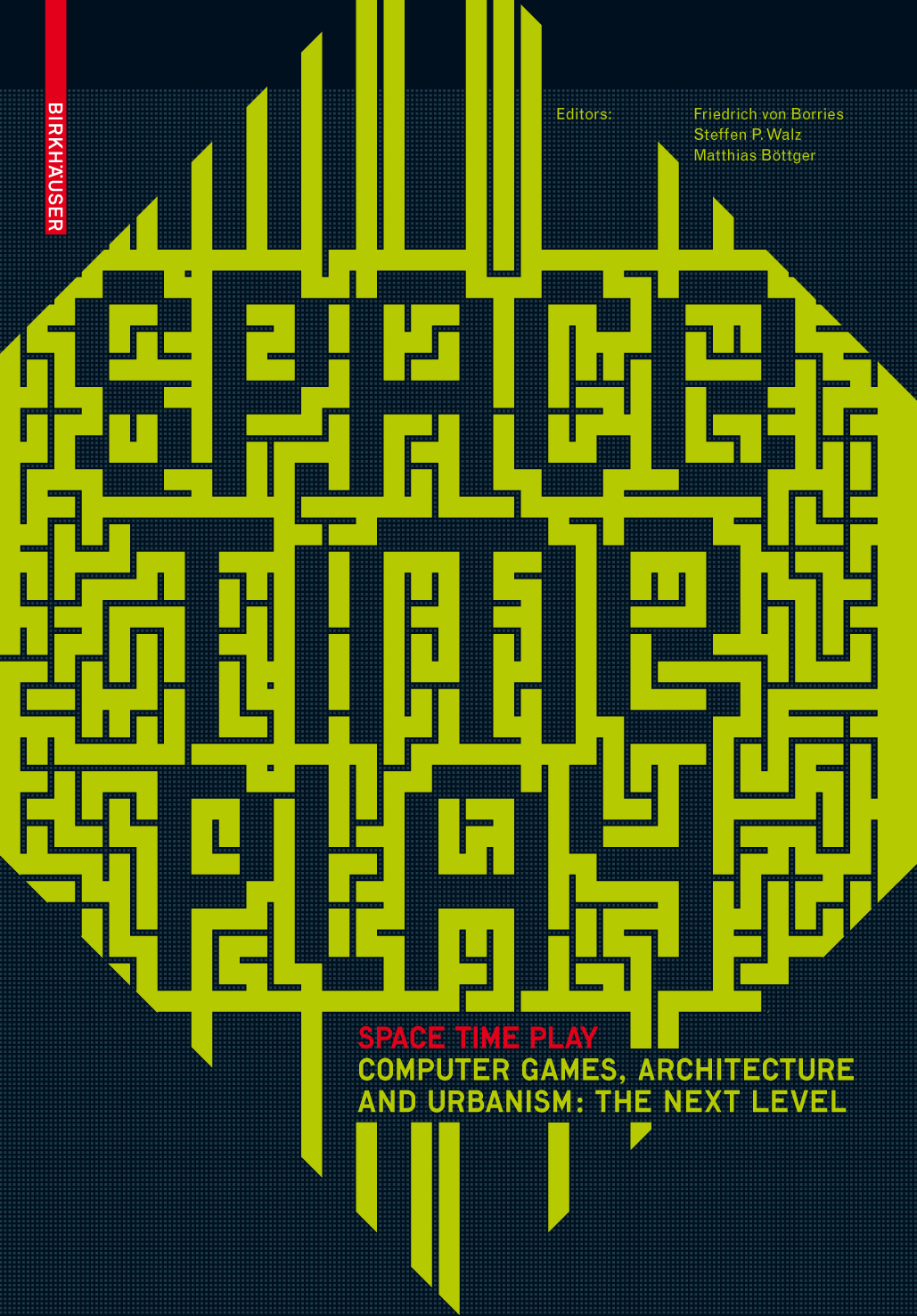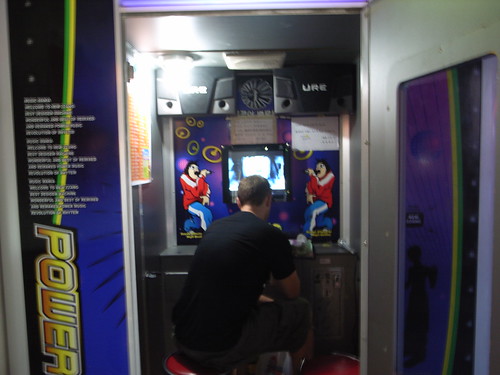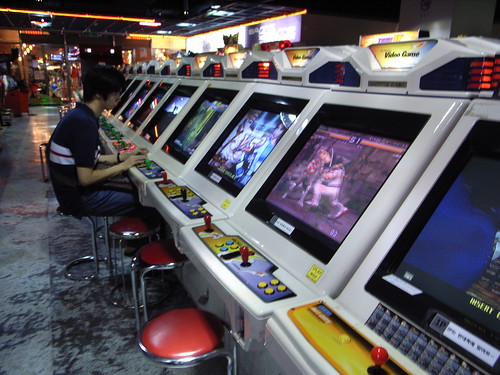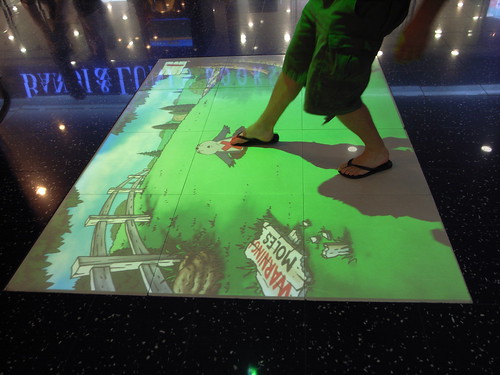(cross-posted at Terra Nova)
Last month, I had the pleasure to co-organize a small event in Seoul about digital and physical space, and how technologies reshape them. One of the speaker, Jake Song gave an interesting talk about the evolution of "virtual space" in multi-player games. A South Korean programmer, regarded as one of the greatest game developers in Korea, Jake is one the of the creator of Lineage and is now CEO of XL Games.
He started by describing text MUDs (1978), in which 100 to 200 concurrent players wandered around virtual places in the form of interconnected rooms. He described to what extent today’s MMORPG inherits most of its design (chat, emote, social structure, etc) but more interestingly pointed out how MUD space was "not correct in 2D sense" using the following schema:

The next step corresponded to 2D MMORPG such as Lineage or Ultima Online, which involved 3000~5000 concurrent players per world. Due to the technical impossibility to have everyone in the same place, there are "parallel universes. As opposed to MUDs, space in geographically correct and as he showed with exampled, players approximately needed about 2 hours from end to end by walking. Through various examples, he showed how buildings are smaller than real world and the necessity to have fast transportation methods (horses, teleportation, etc.)

Then, with 3D MMORPG like EverQuest, Lineage II or WoW, game space is designed for 2000~3000 concurrent players. Compared to 2D MMORPG, the number of concurrent players are reduced somewhat because server has to handle more complex 3D data. The game space generally corresponds to 20 × 20 km in size and transportation methods are needed more than ever (mounts, flying mounts, teleportation). Level design included place utility buildings for players to access conveniently. Shops, banks, etc can be placed far from each other to make players feel the city big, but it will make players inconvenient (" Down time means idle time such like staying in town, moving to other place, etc."). The virtual environment is large enough to feel like the real world and is similar enough to use common sense to navigate.
He concluded with the challenges: the difficulty to have larger game world, the possibility to have user-generated content (to populate worlds), the difficulty to have "one big world" and the ever-growing inclusion of environmental change (weather changing accordingly with weather feeds), evolution over time (deformable terrain
destructible building, changing forest, buildings turned into ruins, etc.
So, down the road, the main issues are:
- geographical correctness: should the system looks and behave like a real-life equivalent (which somehwat connects to the work of Harry Drew).
- given that geographical correctness is now common, time and transportation is an issue: it takes time to go from A to B and transportation systems must be designed (teleportation, flying in Second Life).
- presence of concurrent players.
- presence of "places" with functional capabilities (communication, trading).
Although this may look obvious to many reader, this description if interesting from the research point of view (as well as to have the developers' opinion). In my case, this is important for my research about how location-awareness interfaces can convey information about people's whereabouts in digital spaces. Given the differences to represent space, there are some implications in the way location-awareness tools can be designed. More about this topic later.

 (A screen capture of Habbo Hotel as shown on the Gamasutra website)
(A screen capture of Habbo Hotel as shown on the Gamasutra website)